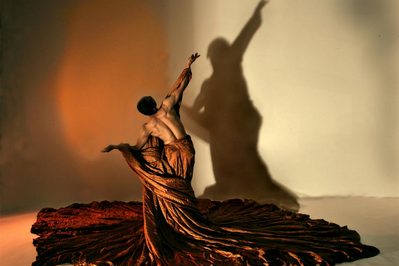Kun-Yang Lin feels right at home in Philadelphia.
So much so that the out and highly acclaimed Taiwanese choreographer has set up shop here both with his eponymous dance company and his Chi Movement Arts Center.
“Philadelphia has great potential, and the arts scene is so vibrant,” Lin said. “I moved here in 2003, and I accepted a teaching position at Temple. Around that time, I commuted between New York and Philly to run my own company and continue my creative work. At one point I realized it wasn’t necessary. I had to find a home. It’s like coming out. You need to really find an identity, and a home provides you with an identity.”
Lin is widely regarded as one of the finest choreographers to come out of Taiwan, and his work has been presented throughout North America, Asia and Europe. His style is a fusion of Western and Eastern dance styles, a byproduct of his emigration to the U.S. in 1994.
“From the look, maybe a lot of people will get an Asian feel,” Lin said of his work. “But I often say, describing my own work, it’s a reflection of life itself. Obviously my background and where I grew up have a great influence. Moving as an immigrant to the U.S. was a great influence. All my studies and dancing with different contemporary dance companies in New York, they have all become part of my influences. So the style and the look is contemporary dance with an Asian aesthetic and philosophy because that’s part of my background.”
Lin said the biggest difference between the two styles is the level of freedom and abandon that Western dance styles have.
“There’s nothing to worry about” in Western dance, according to Lin. “Just let it happen. It’s almost like a free spirit.”
That sense of freedom also carries over to issues of sexuality, which Lin said he is more likely to express in his work than most Asian artists.
“In Asia, I did a piece several years ago, which I created for another dance company,” Lin said. “After I finished it, people said, ‘It’s almost like your biography of coming out.’ I didn’t really realize that. But I think I had become more bold. You can say anything you want to say. That is part of the American spirit: free speech. For me it was through dance. In Asia, sometimes people have to guess.”
Ken Metzner, Lin’s life partner and executive director of Chi Movement Arts Center, added that openly gay artists are rare in Asia.
“From our observations and our relationships with other artists in Asia, the artists who are gay or lesbian tend to be much more closeted than they are here because homosexuality is less accepted culturally in Asian countries than it is here,” he said. “For example, when we had our commitment ceremony in 2004, it was shocking because the minute we walked out, his cell phone rang, and it was a reporter from the largest Chinese language newspaper in the world saying that she had heard that he had married a man. She interviewed him over the telephone. There were also other reporters there from Asia. Then just a day or two later, the Asian press covered it in very bold dramatic fashion with photographs and big spreads in the newspaper. That’s not something that typically happens here. Over there it was big news that an artist was openly gay and embracing his relationship with a same-sex partner. His mother came to the ceremony from Taiwan to participate, which is not something that would happen over there. We did get a lot of nice e-mails from people who were encouraged by seeing our story.”
Today, Lin splits his time between performing and teaching, but doesn’t prefer one over the other. In fact, he doesn’t make any distinction between the two.
“I often tell my students that I never separate those things,” he said. “I think I enjoy everything associated with dance. When I first studied dance, I never really thought I would become a teacher or choreographer. But I just do whatever I believe or I feel drawn to. Sometimes you feel alone. You talk by yourself, but you realize there’s something more that you’d like to express, and that’s when I started to create works. By now I’ve created 65 works. I started teaching in 1998, but the most important time was around 2003. I was diagnosed with a brain tumor. I asked myself if I only had a year to live, what would I do? I realized I want to share my art through work and then, I realized, to teach.”
Kun-Yang Lin/Dancers perform their first evening-length concert in Philadelphia featuring the world premiere of “A-U-M,” a Hindu-inspired piece, and some of the company’s other signature pieces at 8 p.m. Feb. 6-7, at Painted Bride Art Center, 230 Vine St. For more information, visit www.kunyanglin.org or call (215) 925-9914.
Larry Nichols can be reached at [email protected].
